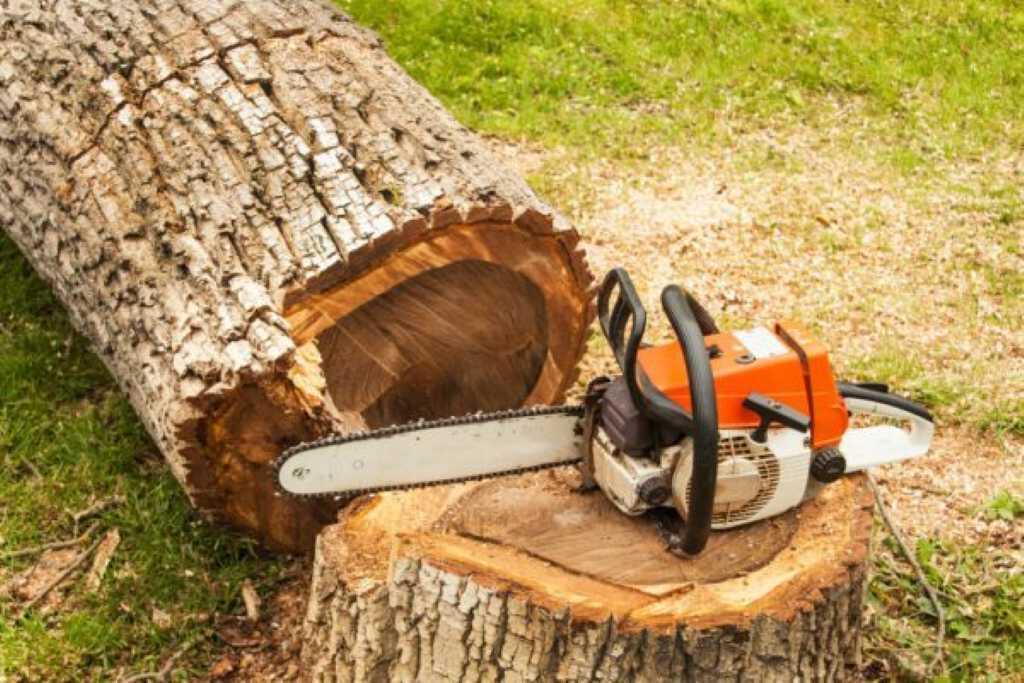Tree removal is the process of safely cutting down a tree, typically due to safety, structural, or aesthetic concerns. While trees offer beauty and benefits, sometimes removing one becomes the smartest and safest option.
Why Tree Removal is Sometimes Necessary
Trees can outgrow their space, become hazardous, or simply interfere with new construction. When a tree poses risks to property or people—or it’s no longer healthy—removal is often the best solution.
Common Reasons for Tree Removal
Dead or Dying Trees
Once a tree is dead, it quickly becomes a danger. Brittle limbs can fall without warning, and the structure weakens, risking total collapse.
Storm-Damaged or Hazardous Trees
Heavy winds, lightning, or ice can severely damage a tree. If the structure is compromised, removal might be required to prevent future accidents.
Invasive Root Systems
Some tree roots grow aggressively and can damage sidewalks, foundations, and plumbing. If the roots are invasive, the tree may have to go.
Construction and Landscaping Plans
Planning a home extension or landscaping overhaul? Sometimes tree removal is needed to make room for those changes.
Diseased or Pest-Infested Trees
Certain tree diseases or infestations spread rapidly. Removing the affected tree can protect nearby plants and trees.
Warning Signs That a Tree Needs Removal
Leaning or Tilting Trees
If your tree is leaning more than 15 degrees, that’s a serious red flag. It may indicate root failure or soil instability.
Cracked or Splitting Trunks
Large cracks or splits can compromise the entire tree’s structure. These trees are at high risk of falling.
Hollow or Rotten Spots
If the tree’s trunk sounds hollow when tapped or has large cavities, its core may be decayed beyond saving.
Fungal Growth at the Base
Mushrooms or fungi around the roots can signal decay in the root system—another potential hazard.
The Tree Removal Process
Site Assessment and Preparation
Arborists inspect the tree, check surrounding obstacles (like power lines), and decide on the safest approach.
Climbing and Limbing
The process often starts by climbing and removing limbs from top to bottom to control the tree’s fall.
Sectional Felling or Full Tree Drop
Depending on space, arborists either drop the tree in sections or, in open areas, fell the entire tree in one go.
Stump Removal or Grinding
Once the tree is down, you're left with a stump. You can grind it down or opt for full stump extraction.
Cost of Tree Removal
Factors That Affect Tree Removal Cost
-
Tree height and diameter
-
Tree location and accessibility
-
Emergency or after-hours service
-
Tree species (hardwood vs. softwood)
-
Whether stump removal is included
Average Pricing by Tree Size
-
Small (under 30 ft): $150 – $400
-
Medium (30–60 ft): $400 – $800
-
Large (over 60 ft): $800 – $2,000+
Emergency Tree Removal Costs
Storm damage or immediate threats usually cost more due to urgency, time of day, and risk level.
DIY vs. Professional Tree Removal
Risks of DIY Tree Removal
Unless you’re a trained climber with safety gear and a chainsaw license—don’t do it. DIY removal is dangerous and often illegal.
Benefits of Hiring Certified Arborists
Pros have the tools, training, and insurance to do it safely. Plus, they can diagnose the tree’s health and offer alternatives if removal isn’t necessary.
Legal and Safety Considerations
Tree Removal Permits
Many towns and cities require permits for tree removal, especially for protected or heritage trees. Check local laws before cutting.
Neighboring Property Concerns
If a tree straddles property lines, you may need neighbor approval or to share costs.
Power Lines and Utility Safety
Never attempt tree work near power lines. This is a job for certified professionals with utility coordination.
What to Do After Tree Removal
Stump Grinding or Mulching
Leaving a stump can cause regrowth or become a pest haven. Grind it down or use the wood chips as mulch.
Replanting a New Tree
Miss the shade? Replace the old tree with a new, well-placed species better suited to the site.
Soil Restoration and Landscaping
Fill in the area, plant grass or flowers, and consider regrading the land for drainage and appearance.
Choosing the Right Tree Removal Company
Questions to Ask Before Hiring
-
Are you licensed and insured?
-
Do you offer a written estimate?
-
What’s your experience with similar trees?
-
Will you handle permits if needed?
Insurance and Licensing
Ensure they carry liability insurance and workers’ comp. This protects you in case of property damage or injury.
Reviews and Recommendations
Ask neighbors, check online reviews, and look for ISA-certified professionals for the best results.
Conclusion
Tree removal isn’t just about cutting down a tree—it’s about making your property safer, healthier, and better suited to your lifestyle. Whether the tree is dying, diseased, or simply in the way, taking action with the help of professionals ensures safety and peace of mind. Remember, a bad tree can cause a lot of trouble. If you suspect yours is a hazard, don’t wait until it’s too late—act now.
FAQs
1. Can I remove a tree myself?
Only if it's small, easy to access, and legal in your area. Otherwise, hire a pro—it’s safer.
2. How long does tree removal take?
Most jobs take 2–6 hours, but large or complicated removals may take a full day or more.
3. Will the roots keep growing after removal?
Possibly. Stump grinding helps stop regrowth, but some trees sprout new shoots unless the roots are treated.
4. Can I use the wood from the removed tree?
Yes, many tree services offer to cut it into firewood or mulch. Just ask!
5. Do I need a permit to remove a tree?
Often, yes—especially in urban areas or for large/protected trees. Always check with local authorities first.

